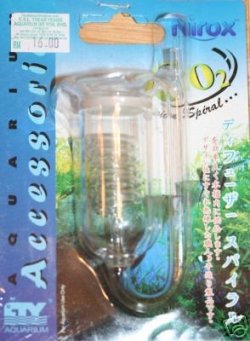Hi,
before I ask my question, I know I have bought a cheapish ceramic diffuser and you only get what you pay for. However, I have fitted my diffuser, which is a glass ceramic diffuser as shown below. The problem I have is that the mist is only coming out of a small area of the disc. At the moment, I am able to get about 30ppm carbon reading in my tank. I would like to get it up to 40ppm, but if I turn the flow rate up, I get a stream of larger bubbles coming out of one point in the diffuser. These bubbles are of a size that you can hear them bubbling up through the diffuser. What I would like to know is, do these diffusers bed in after a while, where more of the disc will come into use. If so, I am hoping it will reduce the pressure behind the ceramic plate and therefore allow more bubbles through before there is enough pressure to force the larger bubbles out. If not, I will stick with the 30ppm until I can afford a better diffuser. Any advice will be very welcome.
before I ask my question, I know I have bought a cheapish ceramic diffuser and you only get what you pay for. However, I have fitted my diffuser, which is a glass ceramic diffuser as shown below. The problem I have is that the mist is only coming out of a small area of the disc. At the moment, I am able to get about 30ppm carbon reading in my tank. I would like to get it up to 40ppm, but if I turn the flow rate up, I get a stream of larger bubbles coming out of one point in the diffuser. These bubbles are of a size that you can hear them bubbling up through the diffuser. What I would like to know is, do these diffusers bed in after a while, where more of the disc will come into use. If so, I am hoping it will reduce the pressure behind the ceramic plate and therefore allow more bubbles through before there is enough pressure to force the larger bubbles out. If not, I will stick with the 30ppm until I can afford a better diffuser. Any advice will be very welcome.

